To celebrate my fiftieth birthday, we are taking a trip!
Where? Where?
I always like to give you a chance to guess. Last year, someone guessed within an hour of the post going live at midnight. Let’s see who’s tuned in and sharp as a tack after lunch.
First clue: a very narrow house, only 6 feet wide.*
Second clue: Color and scavenged building materials including corrugated metal.
These charming houses are some of the most expensive real estate in the world.
It’s a little city (of sorts) within the city. A city of the dead.
Our guide told us that these three figures are the most important people — the most culturally resonant — in the country.**
I’ve written about one of them before.
Here is an even better article about D.M.
After a day of rest and light exploration of our hotel environs, our sight-seeing started in the Cementario de La Recoleta — a vast cemetery of mausoleums with crypts beneath them. This started as a public cemetery in the early 19th century, but the going rate today for one of these plots (all occupied) is $250,000 USD. There are no undeveloped spaces. Turnover happens through periodic private sales or tax bill delinquencies. Fail to pay your property taxes (on the mausoleum) and they . . . evict your dead and sell the property to someone else. People say “the only things that are certain in life are death and taxes” — but it seems that understates the power of taxation. Taxes last forever and extend into the afterlife.
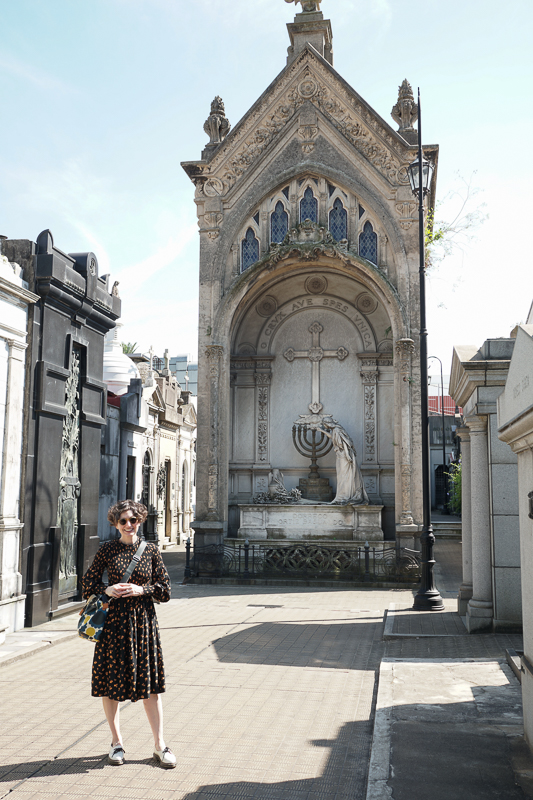
And now, I’ll turn the pen over to The Photographer.
The Photographer here! Our guide was an elfin fellow named Alejandro Frango. Astonishing man: he teaches philosophy at university and has traveled all over the world, including at least ten visits to the USA, four years living in Europe during Argentina’s “dirty war,” six months in India, and Australia and Antarctica…basically, everywhere except the moon and it wouldn’t surprise me if he had been there too. He has a passion for the philosophy of food, which he calls “gastrosophy.” (We chatted for a bit about Michael Pollan.)
Alejandro took us to several neighborhoods, including La Boca, which (as he put it) is “poverty but not misery,” and indeed it was full of humble homes and small stores but was brightly colored and clean and full of murals and paper-mache statues. We talked politics, and he argued that Trump was “a stomachache but not a cancer” — a judgment with which I cautiously agree, after the Democratic sweeps in 2017, 2018, and 2019.
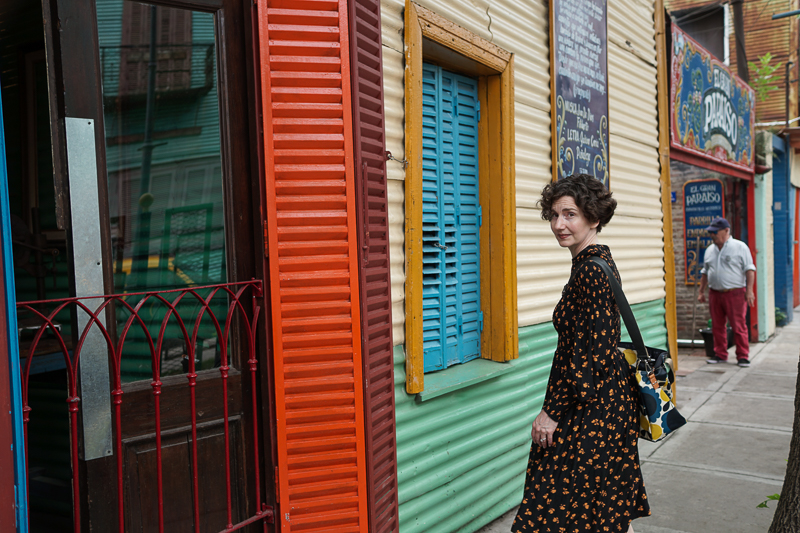
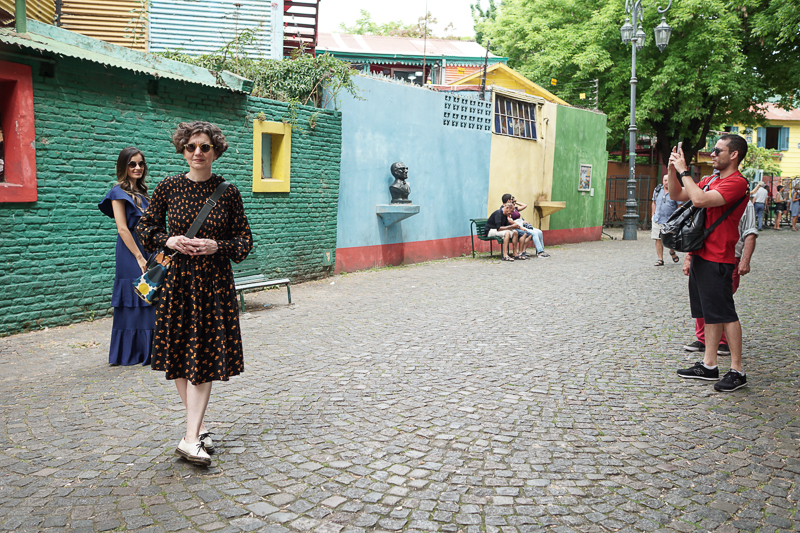
We discussed the inflation in Argentina, which is currently running 60% a year. I find it very difficult to understand how a society can stay coherent when one’s nest egg is losing 60% of its value every year. He explained that better-off Argentinians hold their money in U.S. dollars. That explains a bit, but I still don’t understand it. It makes me wonder if all of our interlinked Western economies are headed for a crash because we’ve built an economic system that assumes that expansion and debt can be sustained forever.
I wrote my masters’ thesis on Shakespeare’s play Timon of Athens, in which a debt crisis takes down the entire ruling class and the result is savagery. But for now, Buenos Aires seems bright and busy and cheerful, even the poor parts. It was marvelous fun to talk with Professor Frango, who in my opinion would be the world’s best dinner guest.
Now back to The Directrice herself.
Years ago, some scientists undertook a study with GoPro-style cameras to understand a mystery in the life sciences: How do house-cats spend their time? They discovered that cats spend the majority of their days “sleeping or resting” (hard to tell the difference from time-lapse photography) and “eating or looking at food” (again, hard to tell the difference).
The Photographer and I have laughed about this for years — looking at food as a major life activity?– but, in truth, we like looking at food, too. We always like seeing food markets in foreign cities. We were delighted to visit this covered market in San Telmo.
There were greengrocers, butchers, bakers, and many food stalls cooking up all sorts of savories. Everything smelled so delicious.
And we saw how sausage is made! The Photographer took one snap of this butcher at work and zipped off, but it wasn’t that gross.
Of all the charming sights we saw on Day 1, we were most transfixed by the enormous fig trees ornamenting several parks in La Recoleta. They looked as if they might come to life at any moment and share the wisdom of the universe with us.
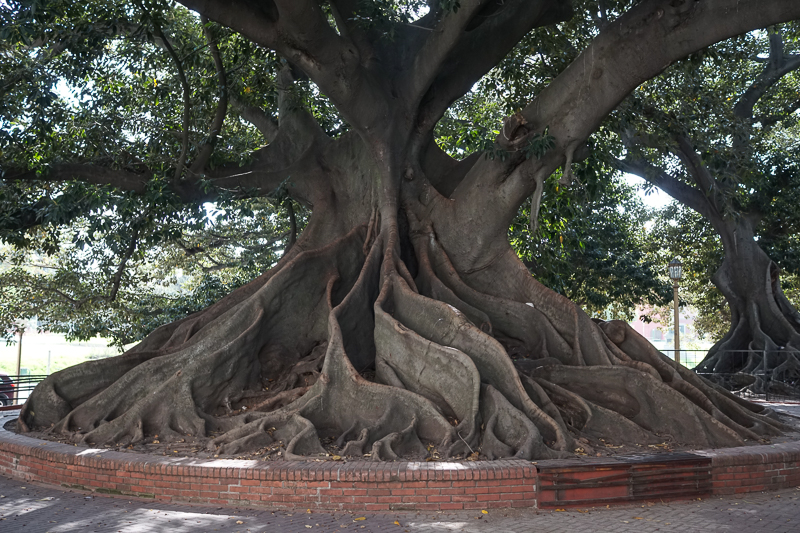
You’ve seen these clothes previously. I bought them for our trip to Chile last year. No need to buy anything new!
* This house in San Telmo is the narrowest in the city. It was built in the nineteenth century, by scofflaw slave-owners who circumvented manumission requirements by setting up an independent address –really a dormitory — for their domestic “employees.”
** The most important/influential figures are Diego Maradona, Eva Peron, and the country’s greatest tango singer (whose name I have forgotten).

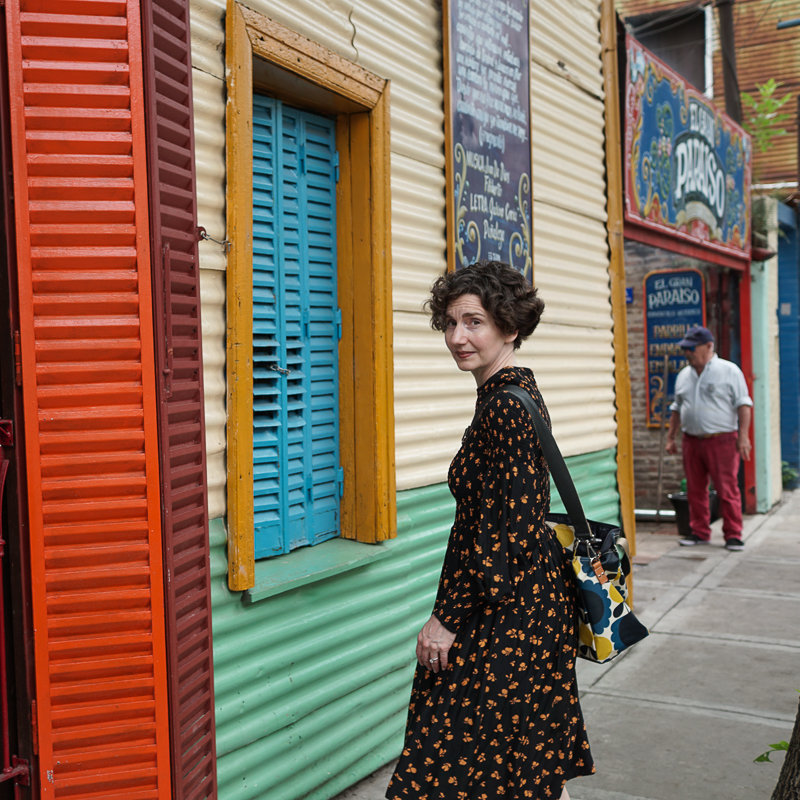
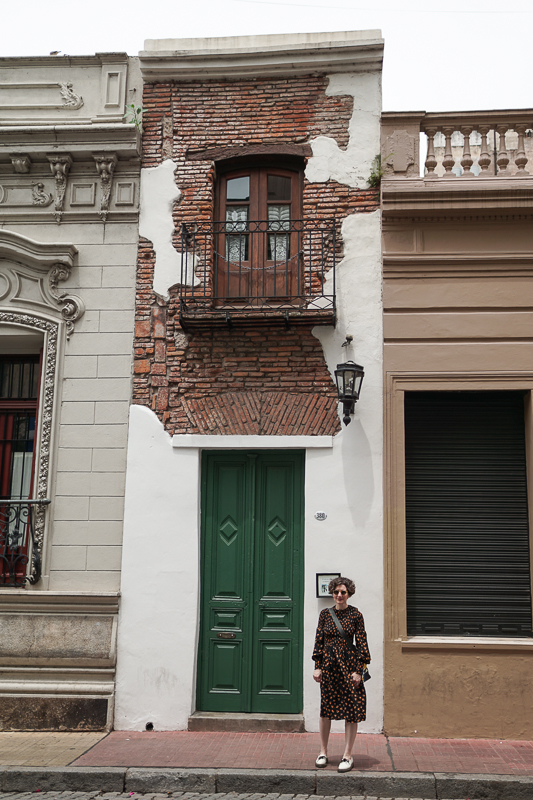
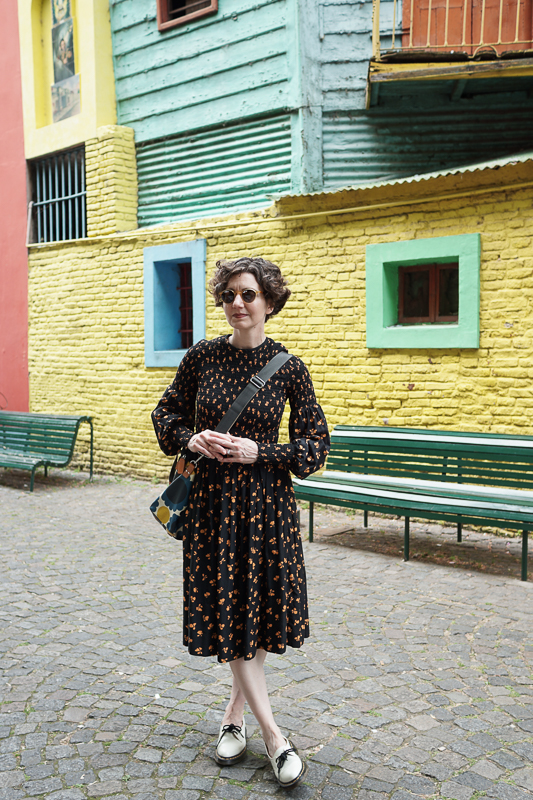
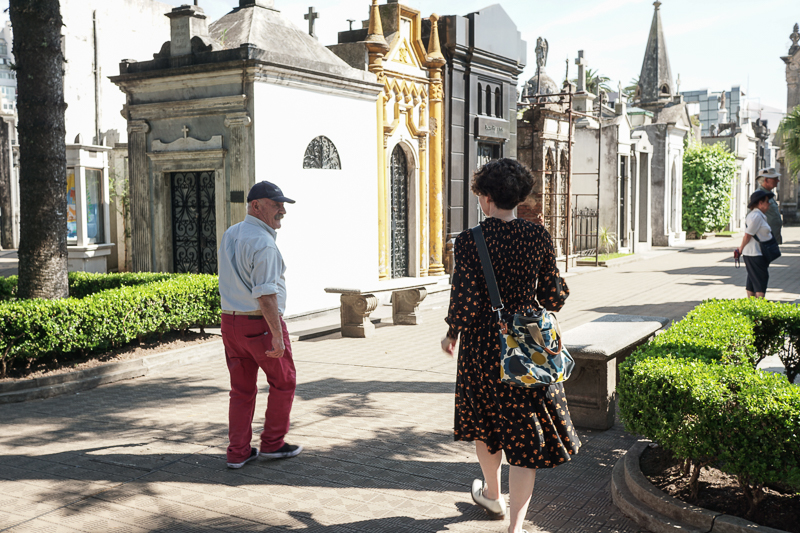
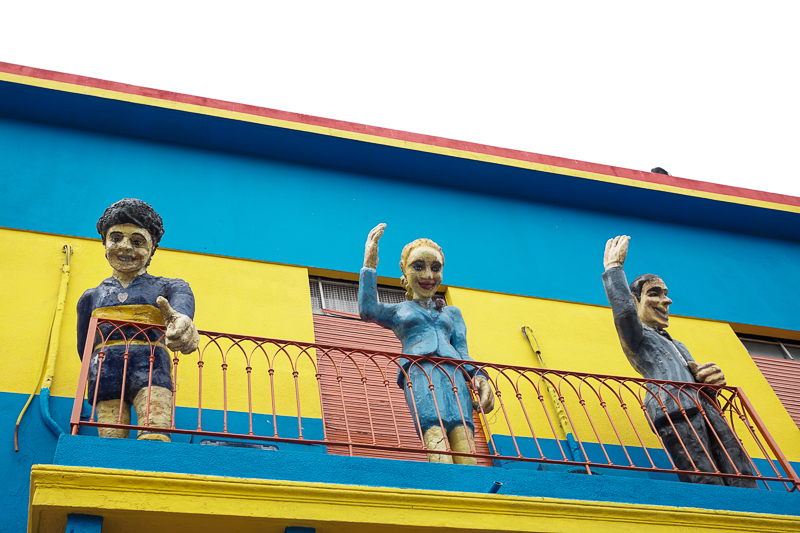
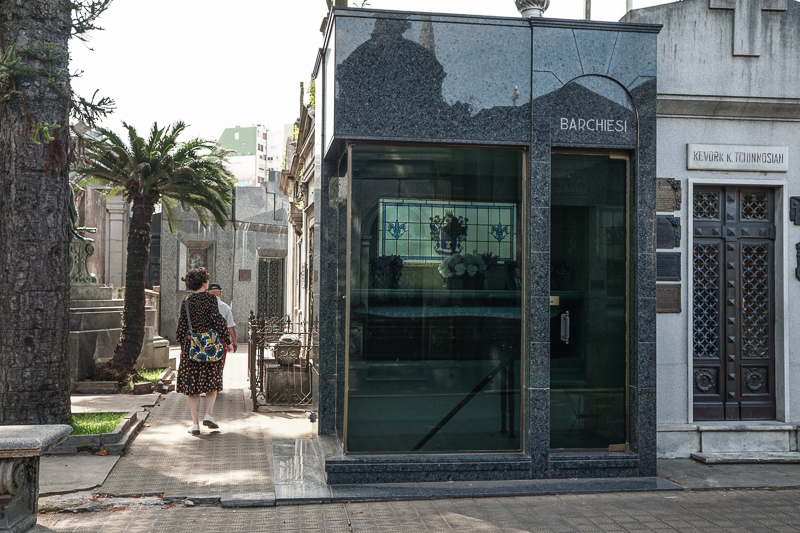
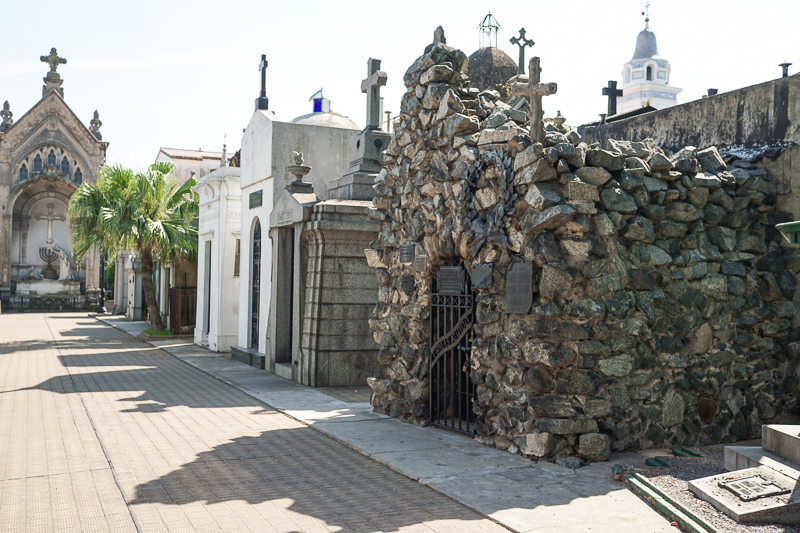
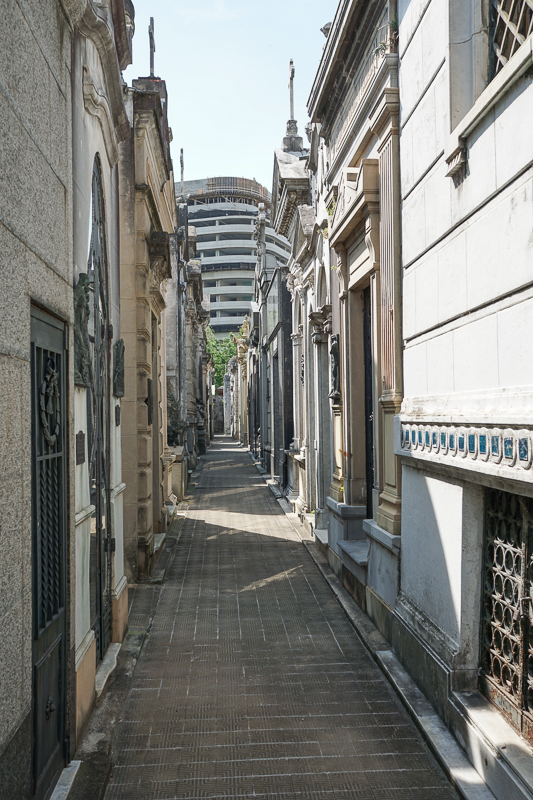
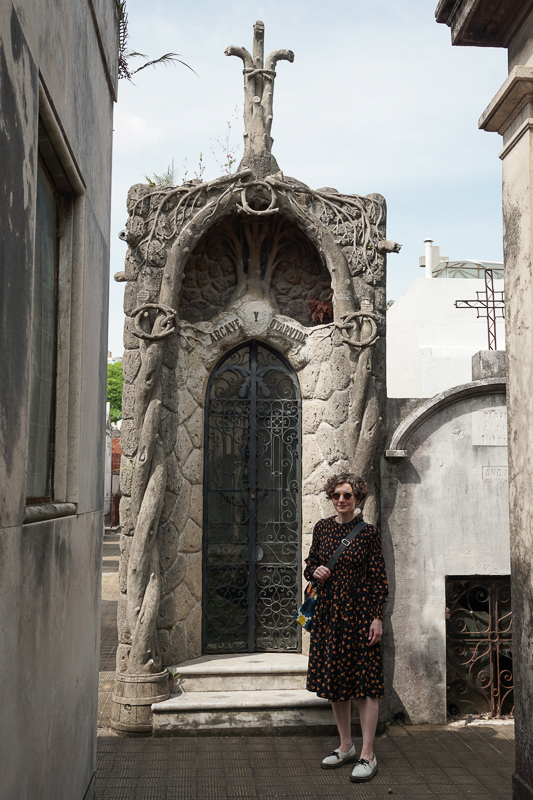
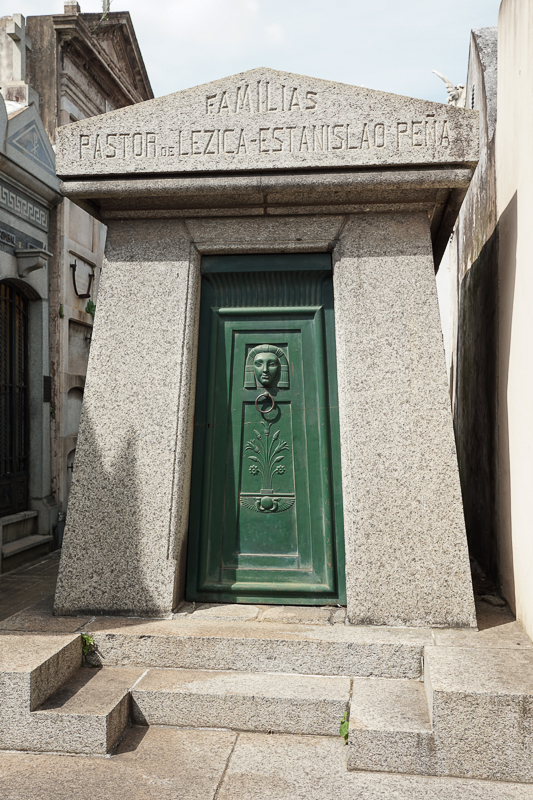
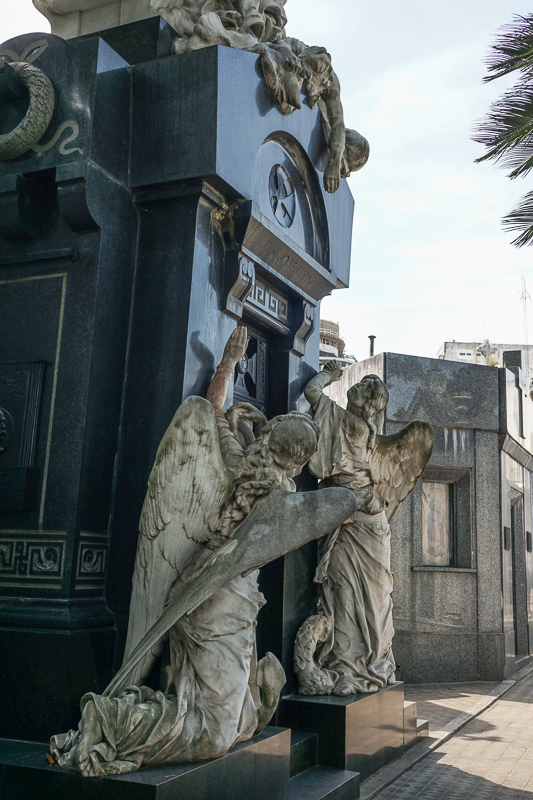
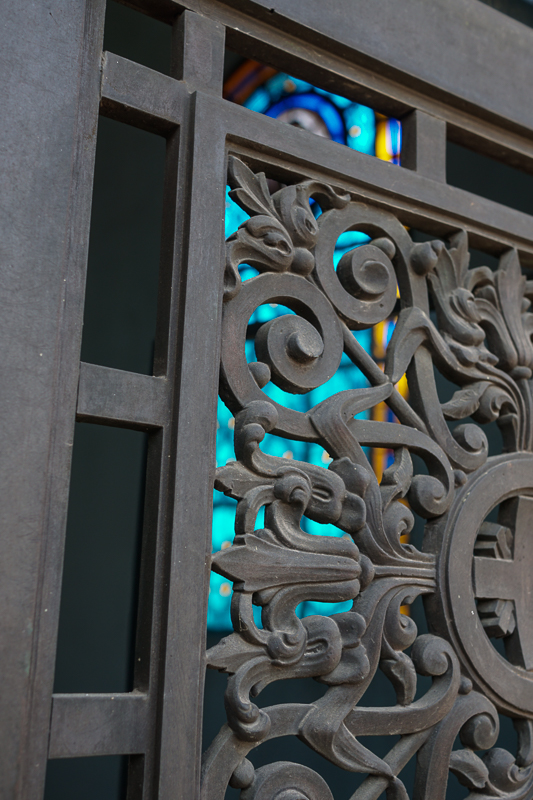
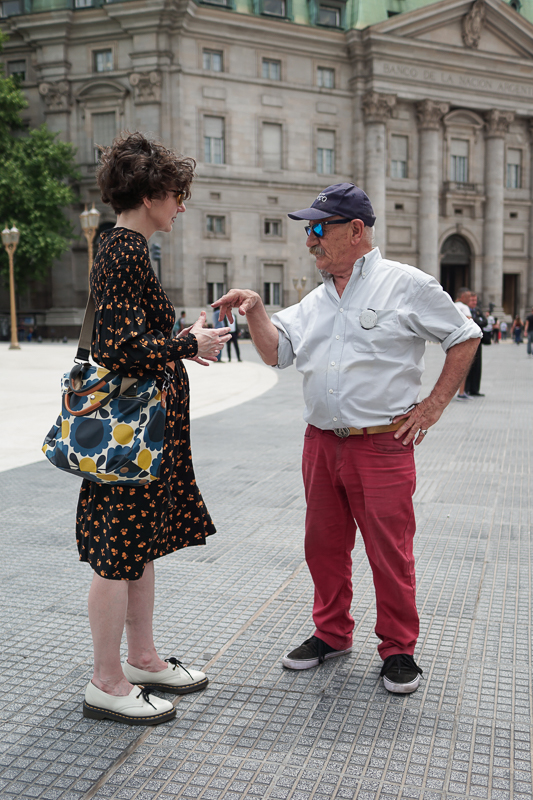
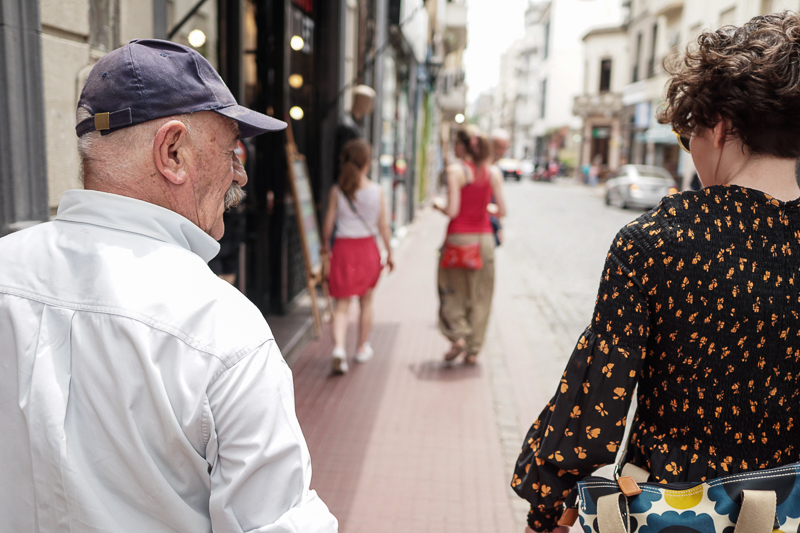
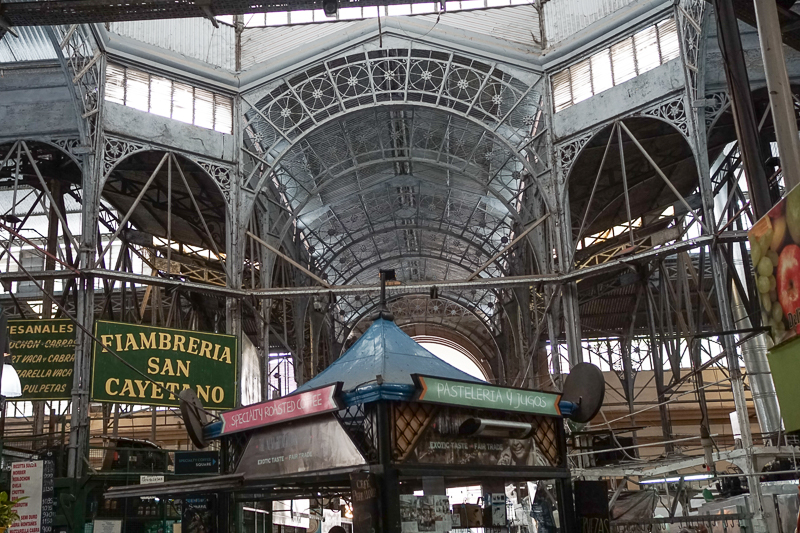

Happy Birthday – enjoy your trip!
I recognized the location immediately from the colorful corrugated metal. Have a wonderful trip! The only upside (!) to such catastrophic inflation is for us tourists bc it makes the shopping a steal; I was in Argentina in the early 200s after their massive debt default. There is so much great style (and good leather) in BA, so I look forward to seeing what you collect. And your travel dress reminds me that I need to up my own travel attire game!
*early 2000s
Don’t cry for me…
Sounds like an amazing trip. And I can’t wait to read The Photographer’s SF novel!!
Happy Birthday! Have a wonderful, well-dressed trip celebrating.
Looks like a great start to a wonderful trip! Enjoy!
Happy Birthday. A trip is a wonderful birthday present. I enjoyed the Photographers additions. I’m going to remember, “a stomach ache, not a cancer” – let’s not give the Orange One more due than he’s worth.
Given the ups and downs of Argentina he’s got a good frame for reference.